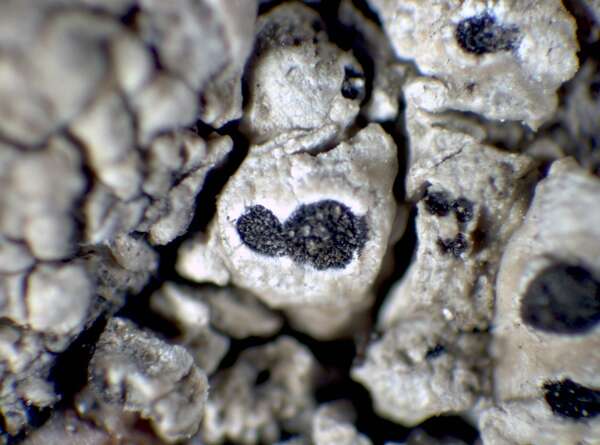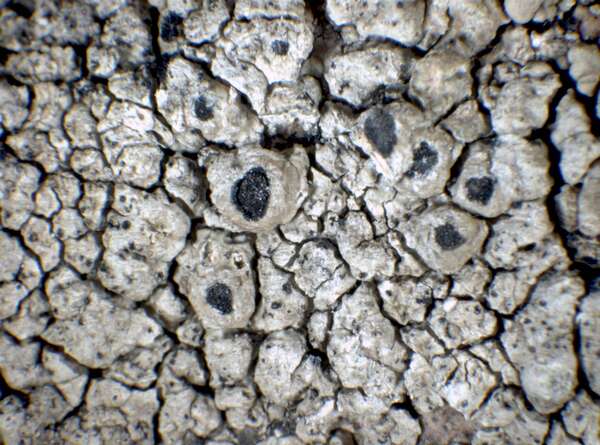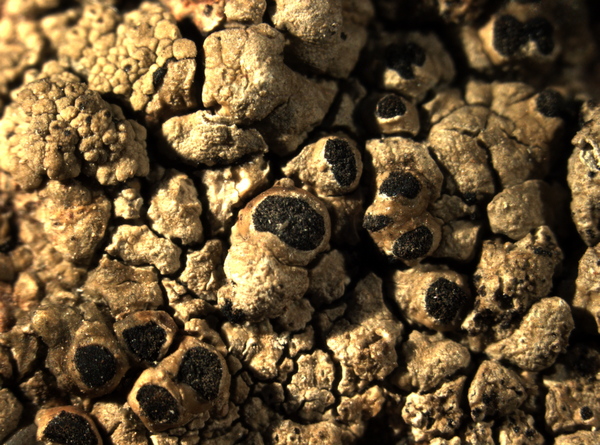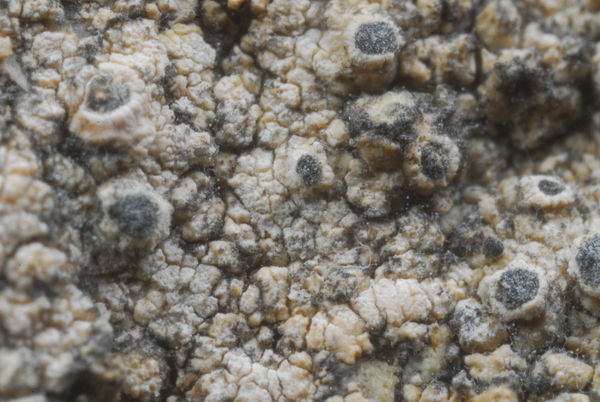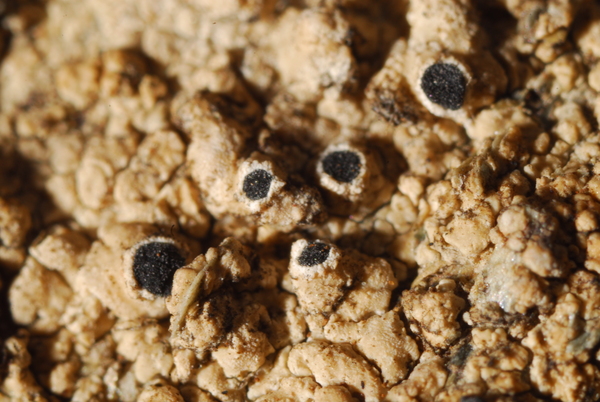Thelomma siliceum (Fée) Tibell
Bot. Not., 129: 243, 1976. Basionym: Gassicurtia silicea Fée in Mérat - Nouv. Fl. Envir. Paris: 252, 1831.
Synonyms: Carlosia lusitanica Samp.; Coniothecium siliceum (Fée) Keissl.; Spilomium siliceum (Fée) Nyl.
Distribution: C - Tosc (Puntillo & Puntillo 2009), Sar (Nöske 2000, Puntillo & Puntillo 2009).
Description: Thallus crustose, episubstratic, verrucose-areolate, sometimes sublobulate at margins, greenish grey to grey, the mature thalli often with a finely granular surface; areoles 0.8-1.2 mm wide, the fertile ones verrucose. Cortex 30-50 μm thick, inspersed with coarse granular crystals; medulla thin, white, I-. Apothecia immersed in the warts, 0.6–0.8(-1) mm across, round to irregular in outline by mutual compression, with a black, mazaediate disc, and a more or less crenulate, whitish thalline margin. Exciple very thin, raised; hymenium 70-110 µm high; hypothecium dark brown, 160-220 μm high. Asci cylindrical, formed singly and dissolving early, with 1-seriately arranged spores. Ascospores 1-celled, brown, globose, 10-14 μm wide, with an irregular ornamentation visible under the optical microscope. Photobiont chlorococcoid. Spot tests: thallus K-, C-, KC+ pink to red, P–. Chemistry: thallus with a depside or depsidone reacting KC+ pink to red, structurally related to divaricatic acid; mazaedium with norstictic and salazinic acids.Note: on hard siliceous rocks in open sites exposed to humid, maritime winds in the Mediterranean belt; certainly very rare, and probably restricted to Tyrrhenian Italy.
Growth form: Crustose
Substrata: rocks
Photobiont: green algae other than Trentepohlia
Reproductive strategy: mainly sexual
Most common in areas with a humid-warm climate (e.g. most of Tyrrenian Italy)
Commonnes-rarity: (info)
Alpine belt: absent
Subalpine belt: absent
Oromediterranean belt: absent
Montane belt: absent
Submediterranean belt: absent
Padanian area: absent
Humid submediterranean belt: absent
Humid mediterranean belt: extremely rare
Dry mediterranean belt: absent

Predictive model
Herbarium samples
Growth form: Crustose
Substrata: rocks
Photobiont: green algae other than Trentepohlia
Reproductive strategy: mainly sexual
Most common in areas with a humid-warm climate (e.g. most of Tyrrenian Italy)
Commonnes-rarity: (info)
Alpine belt: absent
Subalpine belt: absent
Oromediterranean belt: absent
Montane belt: absent
Submediterranean belt: absent
Padanian area: absent
Humid submediterranean belt: absent
Humid mediterranean belt: extremely rare
Dry mediterranean belt: absent

Predictive model
| Herbarium samples |
 INDEX FUNGORUM
INDEX FUNGORUM
 GBIF
GBIF
